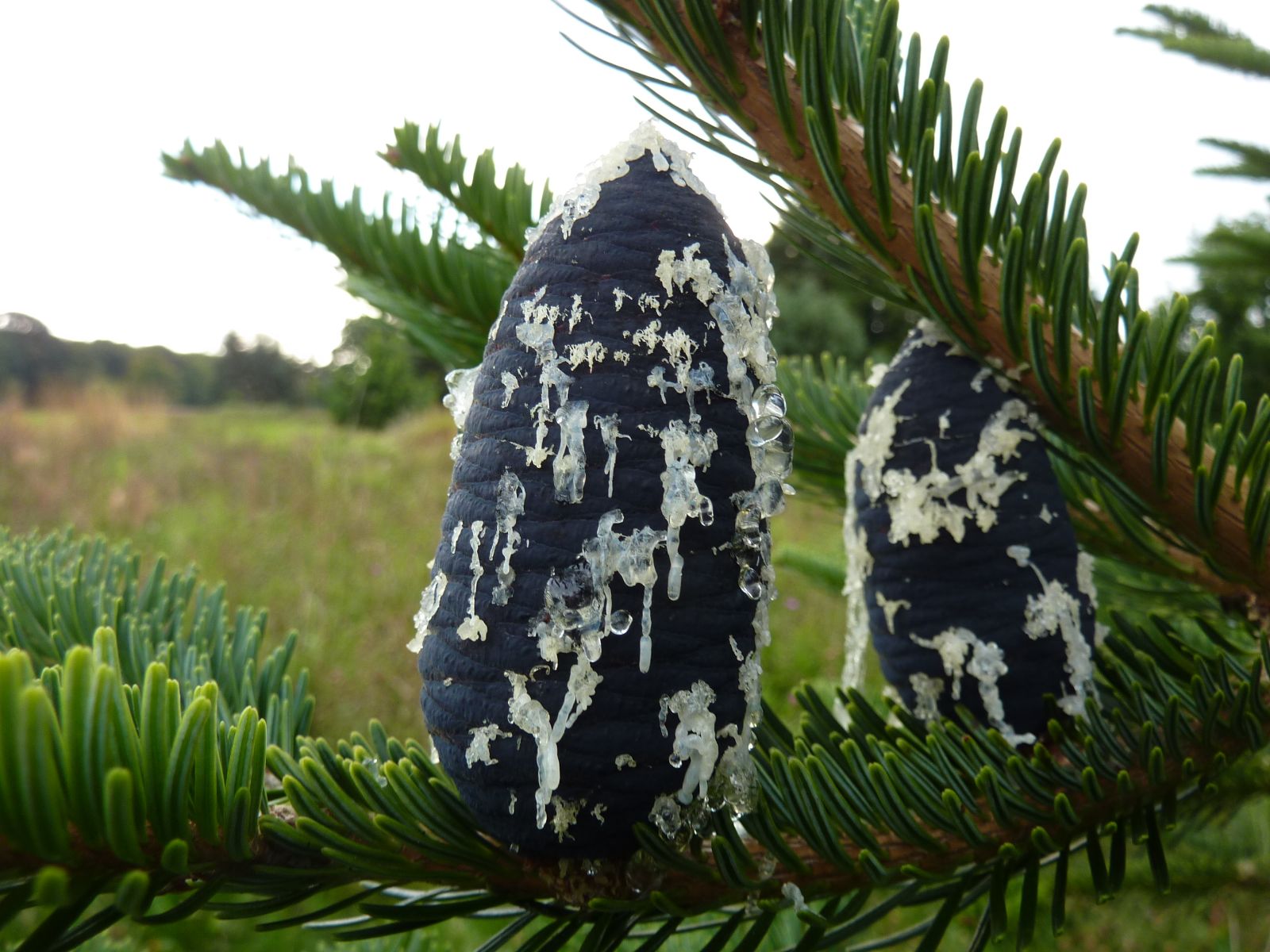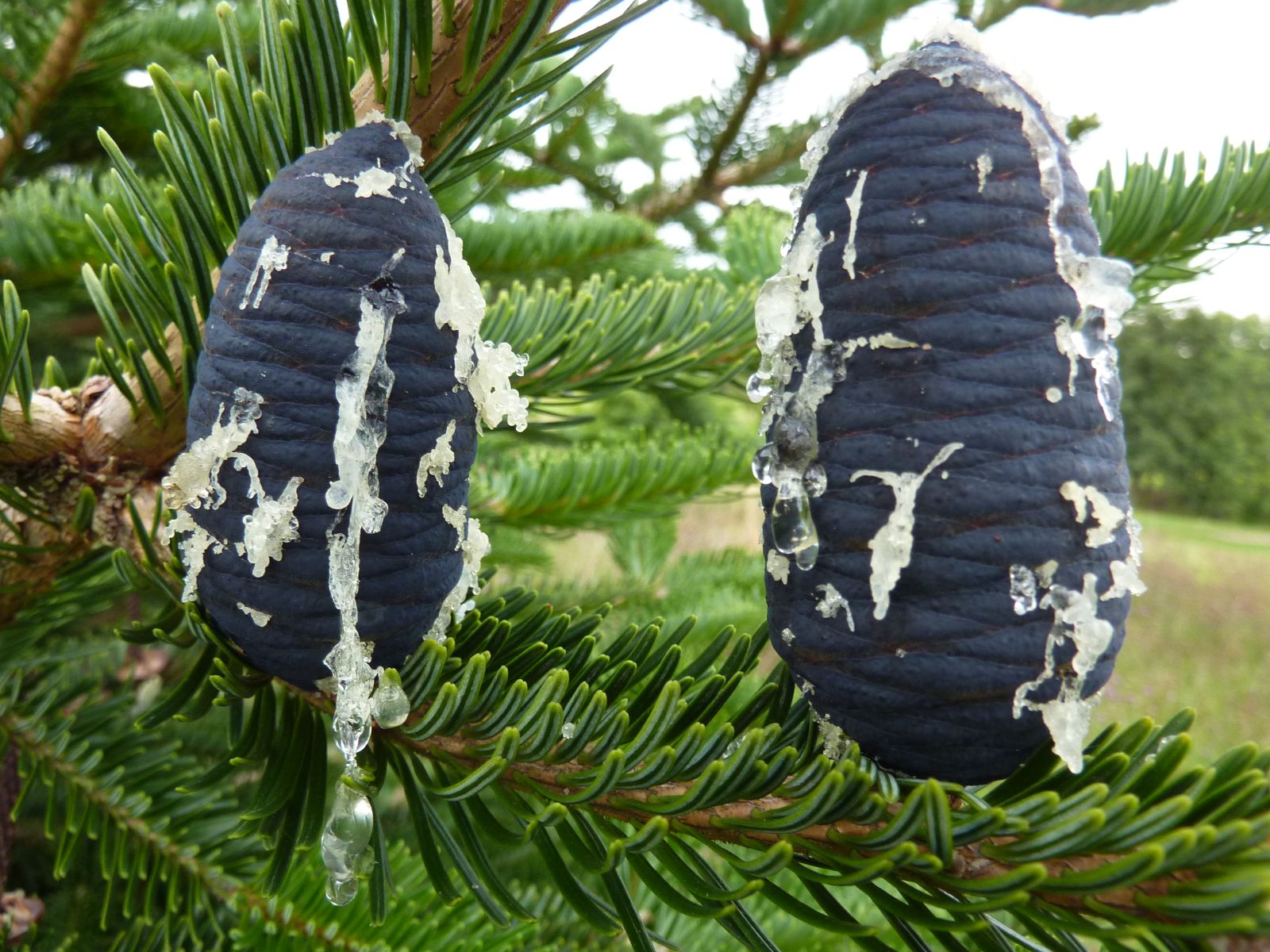Abies kawakamii
Sponsor
Kindly sponsored by
Sir Henry Angest
Credits
Tom Christian (2021)
Recommended citation
Christian, T. (2021), 'Abies kawakamii' from the website Trees and Shrubs Online (treesandshrubsonline.
Other taxa in genus
- Abies alba
- Abies amabilis
- Abies × arnoldiana
- Abies balsamea
- Abies beshanzuensis
- Abies borisii-regis
- Abies bracteata
- Abies cephalonica
- Abies × chengii
- Abies chensiensis
- Abies cilicica
- Abies colimensis
- Abies concolor
- Abies delavayi
- Abies densa
- Abies durangensis
- Abies ernestii
- Abies fabri
- Abies fanjingshanensis
- Abies fansipanensis
- Abies fargesii
- Abies ferreana
- Abies firma
- Abies flinckii
- Abies fordei
- Abies forrestii
- Abies forrestii agg. × homolepis
- Abies fraseri
- Abies gamblei
- Abies georgei
- Abies gracilis
- Abies grandis
- Abies guatemalensis
- Abies hickelii
- Abies holophylla
- Abies homolepis
- Abies in Mexico and Mesoamerica
- Abies in the Sino-Himalaya
- Abies × insignis
- Abies koreana
- Abies koreana Hybrids
- Abies lasiocarpa
- Abies magnifica
- Abies mariesii
- Abies nebrodensis
- Abies nephrolepis
- Abies nordmanniana
- Abies nukiangensis
- Abies numidica
- Abies pindrow
- Abies pinsapo
- Abies procera
- Abies recurvata
- Abies religiosa
- Abies sachalinensis
- Abies salouenensis
- Abies sibirica
- Abies spectabilis
- Abies squamata
- Abies × umbellata
- Abies veitchii
- Abies vejarii
- Abies × vilmorinii
- Abies yuanbaoshanensis
- Abies ziyuanensis
Trees 15–35 m × 0.5–1 m dbh. Crown narrowly-conical to broad pyramidal, occasionally somewhat irregular and open in exposed places. Bark of young trees smooth, soon flaking, sometimes exaggeratedly so, pale yellowish-brown or -grey; on old trees becoming rough and scaly, greyish-brown, detaching in irregular plates. First order branches heavy and long, spreading, somewhat curved, often held in the horizontal plane or somewhat down-swept with age. Branchlets stout, firm, pale buff-brown, prominently ridged and grooved, densely pale-brown pubescent in grooves (pubescence red on coning shoots). Vegetative buds conical-ovoid, 4–5 mm long, very resinous. Leaves densely arranged, pectinate below the shoots, pectinate or parted above the shoot by a ‘V’, leaves of upper ranks shorter than those below and often somewhat upright, 1–2(–2.5) cm × 1.5–2 mm, twisted or curved at base, apex emarginate or obtuse, rich dark green above, pale green with two dull greenish-white stomatal bands below. Pollen cones crowded, 1 cm long, yellowish. Seed cones short pedunculate, cylindric-conical to narrowly fusiform, apex obtuse or umbilicate, 3–9 × 2.5–4 cm, dark blue when immature, ripening through bluish-purple to dark purplish-brown; seed scales flabellate, 1.5–1.7 × 2–2.3 cm at midcone; bracts included at maturity. (Farjon 2017; Debreczy & Rácz 2011).
Distribution Taiwan Chungyang Shanmo (central mountains)
Habitat A component of high-mountain forests at 2400–3800 m asl, the climate is cool-temperate with very high humidity and precipitation (4000–10,000 mm per annum). Occasionally in pure stands on north and northeast facing slopes, but usually mixed with Pinus armandii var. mastersiana, Tsuga chinensis, Picea morrisonicola, Acer caudatifolium and Juniperus squamata var. morrisonicola. Becomming abundant above c. 3000 m, near the tree line stunted trees occur with the Juniperus, Berberis, and Cotoneaster spp. At lower elevations broad-leaved associates include Quercus spinosa, Sorbus randaiensis, Pieris taiwanensis, Rhododendron spp. and Viburnum betulifolium.
RHS Hardiness Rating H7
Conservation status Near threatened (NT)
Abies kawakamii has never been a common tree in cultivation. The original introduction – which Wilson gathered during his visit to Taiwan in 1918 – arrived in collections the following year, but it failed to establish both in the US and in Britain (Warren & Johnson 1988; Mitchell 1972). The exact date of the second, successful introduction, is uncertain, but it must have been prior to 1929 when a tree was planted in the demesne at Birr Castle in Ireland.
For a while the Birr tree was the prime example in cultivation, and the first cultivated tree to produce seed cones; in 1966 it was 11.6 m × 43 cm dbh (Mitchell 1972). It must have come as a great sadness that it died only nine years later, in 1975. The reason for this demise, when the tree ought to have been in its prime, is not recorded, but seedlings were raised from it some years prior to its death and by 1985 the best of these was 12.2 m × 0.38 m (Clarke 1988).
In 2020 no cultivated trees are known that exceed 20 m in height, and only three are known exceeding 15 m, at Benmore, Crarae, and Achamore, all on Scotland’s mild and very wet west coast. A tree planted in 1931 at Headfort, Ireland, had achieved 13 m × 0.76 m dbh by 1980 but has not been measured since; the largest now known is the Achamore tree, 0.72 cm dbh in 2012. An example at Tregrehan, Cornwall, remains impressive despite losing its upper half in a storm in 1971; in 2014 it remained a stubborn 8 m × 64 cm dbh (Tree Register 2020).
Although all these records are from collections in mild areas with very high precipitation, more recent introductions have proven the species more adaptable than it was long thought to be. The next-oldest extant introduction to Britain may be that of Chris Page (Page 10061) which was accessioned at the Royal Botanic Garden Edinburgh in 1976. Extant trees from this gathering are scattered through several collections, including the relatively dry sites of the University of Dundee Botanic Garden and Nymans, as well as at Benmore (BG-BASE data 2020). A group of several trees, raised from the Edinburgh Taiwan Expedition (ETE) introductions of 1991 all initially grew strongly in the very cold climate of Drumlanrig Castle in Dumfriesshire, Scotland. Over the past c. 5 years, though, they have begun to exhibit sporadic dieback, and while some have recovered others remain visibly set back (pers. obs.). The best at Drumlanrig was 8 m × 0.23 cm dbh in 2019 (Tree Register 2020) but none of them have yet coned. Several from the same collection, planted in much more open situations at Maybole golf course in Ayrshire, were coning in 2010 aged c. 18 years (pers. obs. 2010).
In recent years the Taiwan Forestry Research Institute has supplied seed to multiple organisations around the world, and this will usually be the original source of young plants whose origins are ‘unknown’. This relatively frequent seed supply has enabled more widespread planting of Taiwan Fir, and consequently more experimentation, but despite repeated introductions the species has still not established at the Arnold Arboretum (Arnold Arboretum 2020). Together with the absence of any notable examples from continental regions of Europe, this suggests it is not a species for such a climate. There are good examples on the west coast of North America, however, including at the UBC Botanical Garden in Vancouver (University of British Columbia 2020).








